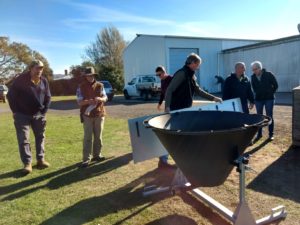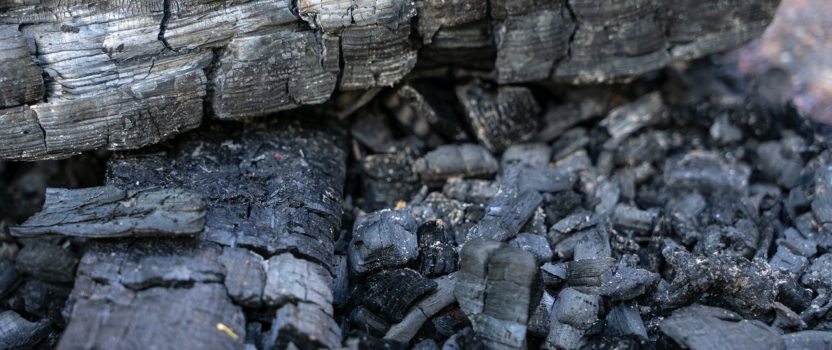A Low Carbon Life | Post 8 2019 | Bio-char & Trees
In the face of the pending climate emergency, that it seems we’re not going to be able to avoid, I like many others ask what can I do. I’ve written about personal and household responsibility for emissions reduction many times, which is the main point of this blog, and also by implication, I’ve been writing about adaptation to a life without fossil fuel products. As well as writing, I also read what others are recommending as a response to this crisis.
There are many, many prescriptions for responding to climate change that range from how to completely reverse the problem, to how we can avoid the worst of what might happen, to pockets of ideas that deal with a particular consequence. The response I find most compelling, and something that I’m capable of doing, is helping to build local, community connections. This is the community resilience response that the Post-Carbon Institute recommends.
So what have I been up to and how does it relate to trees and bio-char? Over the last two years, I’ve been dipping my toe into the community resilience pond. I started small. Fortunately we have a local ‘Progress Association’ that has been operating nicely for a lot of years and one of the things they do is raise money via catering. Soup and sandwiches are often in demand. The soup is usually served in a polystyrene cup. My tentative response was to donate about 100 china mugs to be used instead of the polystyrene. Happily the mugs were well received and the effect was that I had hoisted a flag saying I was worried about climate change but I was prepared to do practical things that might make a difference and I was prepared to help locally.
My next community resilience foray was to organise a local meeting to explore options for using dead farm trees rather than burning them in the paddock. Only a few people turned up and most of those turned up to personally support me which was heart warming. Better uses for dead trees is still being explored but I can’t say there hasn’t been any tangible, tree related outcomes. What has happened though is I know at least four local households, and five or six local people, much better than I did and so might they. Not a great outcome for the dead trees but a good outcome for community connections.
More recently I have had a successful community strengthening outcome. On behalf of the local progress association, I applied for a government grant to put solar panels on our hall and got the funding. We now have a hall with solar and this means that the income from the feed in tariff will at least cover the annual cost of being connected to the grid. Again, I think this strengthened ties and the sense of working together to achieve positive environmental outcomes. Having said that, I need to acknowledge that this particular community, which I only joined 10 years ago, seems to have a long history of co-operation that I’m simply tapping into.
Now to bio-char and trees. After the solar panel project, I was in the fortunate position of being able to get a bio-char making kiln built and run a bio-char making demonstration day. The demonstration day was well attended. The kiln was built to plans supplied by the Ithaka Institute.  It turns out bio-char is a carbon sink (see Breakthrough Australia’s guide to reversing global warming; it has a range of high tech solutions along with one low tech solution – bio-char).
It turns out bio-char is a carbon sink (see Breakthrough Australia’s guide to reversing global warming; it has a range of high tech solutions along with one low tech solution – bio-char).
Now there are at least four groups of local people who want to borrow the kiln and make bio-char for themselves. As a result of this outcome, I feel good and was telling my dear friend KL so. KL understands things – she just has this intuitive understanding of people and ‘things’. Her response was that she would also like to borrow the kiln and get a group together to make bio-char. She then went on to say what a great thing it would be if we made bio-char and planted trees – old fashioned, simple, doable and effective. I agreed with her but I have always wondered about tree planting; they grow pretty slowly and tree planting is used as a means of claiming carbon offset credits which sounds good in principle but I’m unsure if the mechanism surrounding it achieves what it should. So, in my mind, I let the conversation go.
Letting the conversation go was not to be. Serendipity had her way. The next day I came across an organisation called the Crowther Lab. They sound like a dubious, big pharma business but they’re not. They are research ecologists who believe we can plant enough trees outside urban areas and agricultural land to reverse climate change but, the really amazing thing is, they have a map of the world and you can click on your place and they will tell you where trees can be planted and what species should be planted to survive. Have a try! I think it sounds amazing and I think KL and I should talk more about her idea, which also involves getting urban dwellers into rural areas to help. I will, however, ask another friend HC, who synthesises information about climate change and the appropriateness of responses really well, what she thinks. Maybe, just maybe, it’s something we could do that matters more than what I’ve done to date and, at the same time, it would build community resilience.
‘Caring & Doing‘. Until next time, Jane

